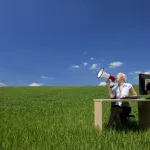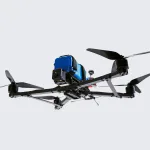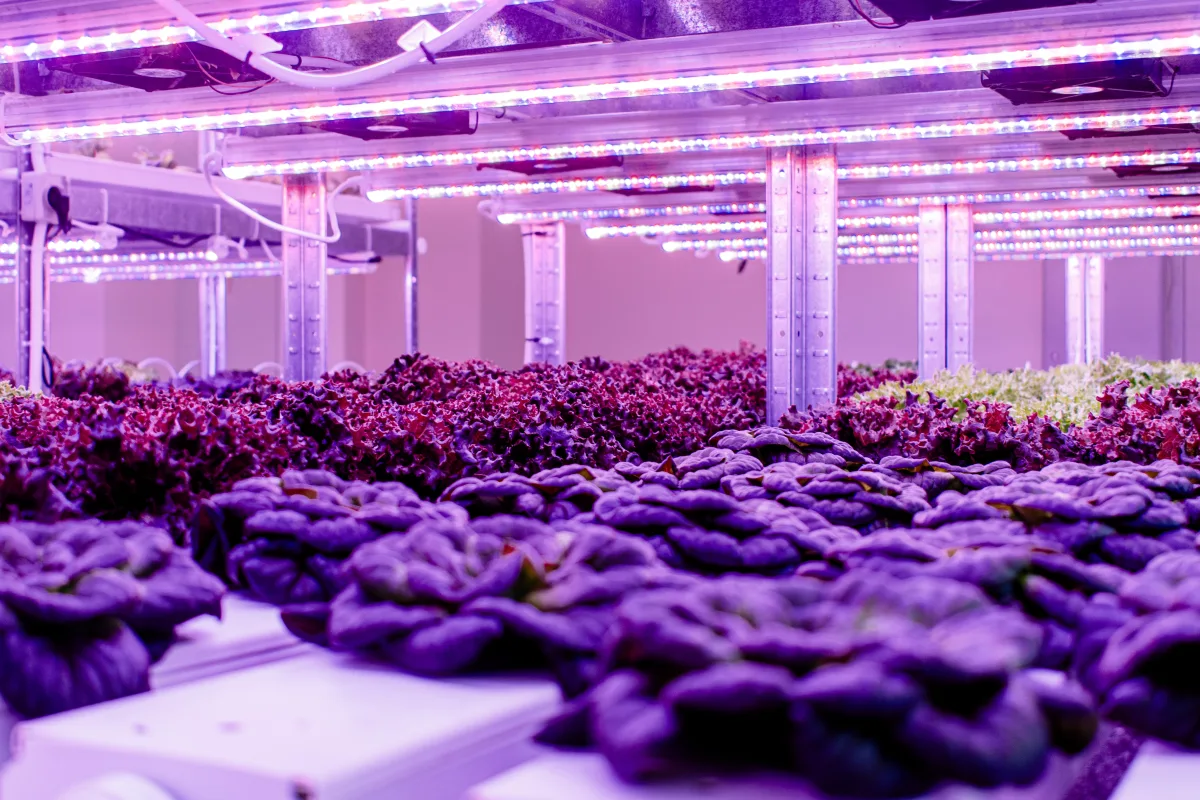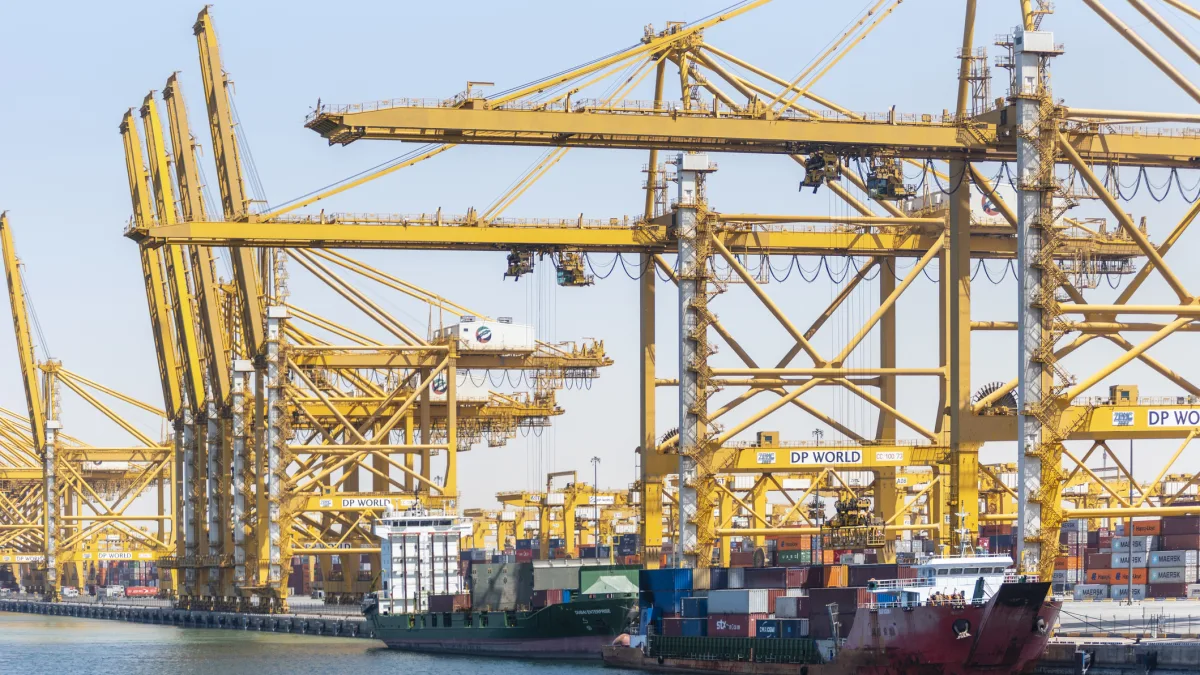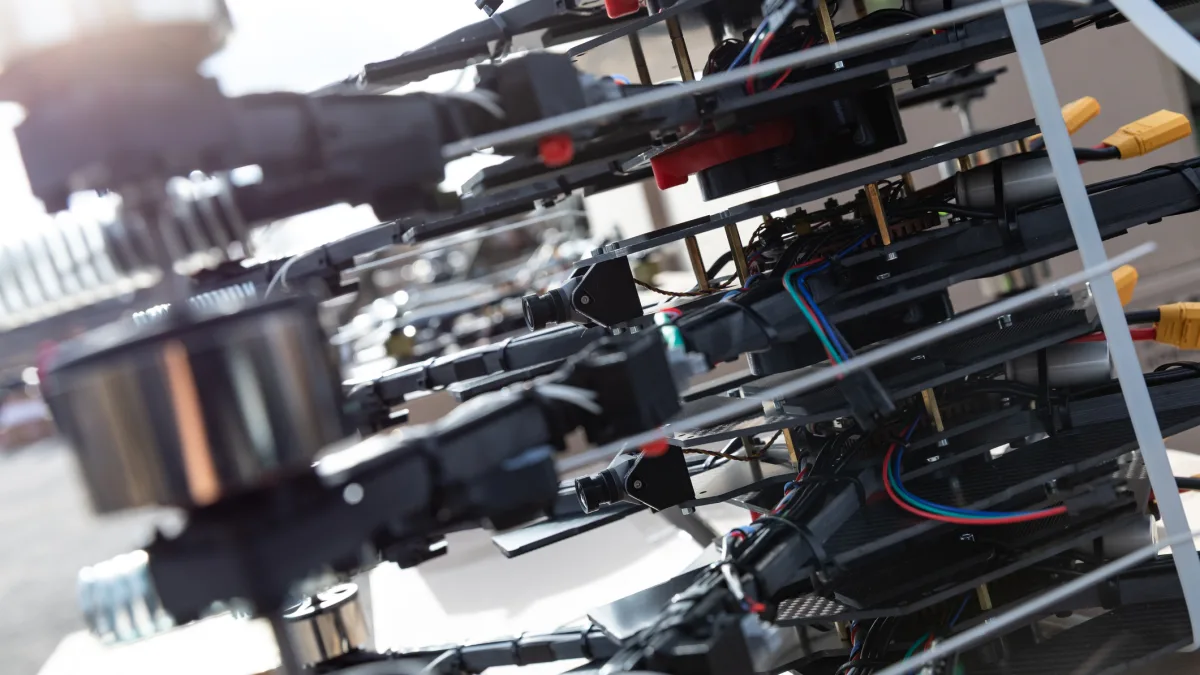A few kilometres outside Moldova’s capital Chișinău there’s a place filled with LEDs, futuristic trays, and clear plants. Inside this vertical ranch, the founder of the City Farm start-up, Dmitrii Albot, grows premium basil under artificial light. He checks the roots, bites into a leaf, and tells us how his country can use its agricultural potential.
Before stepping into the main room of the farm, Dmitrii hands us protective glasses. “The light tires your eyes after a while,” he says, putting them on and looking more like a rock star than a farmer. The place hums. The towering shelves shine on products rooted not in soil but in sponge-like blocks and nutrient solutions.
Dmitrii doesn’t come to his farm every day since he put everything on rails and delegated responsibilities. These days, he has just come back from a 10-day Vipassana silent retreat and is focused on expansion, logistics, and software. But he still knows the cycle of every plant, every tray, every gram of substrate. When we ask him to pick a plant for the camera, he doesn’t hesitate. “It’s safe,” he says, biting into a basil leaf. “We don’t use pesticides. Never needed to.”
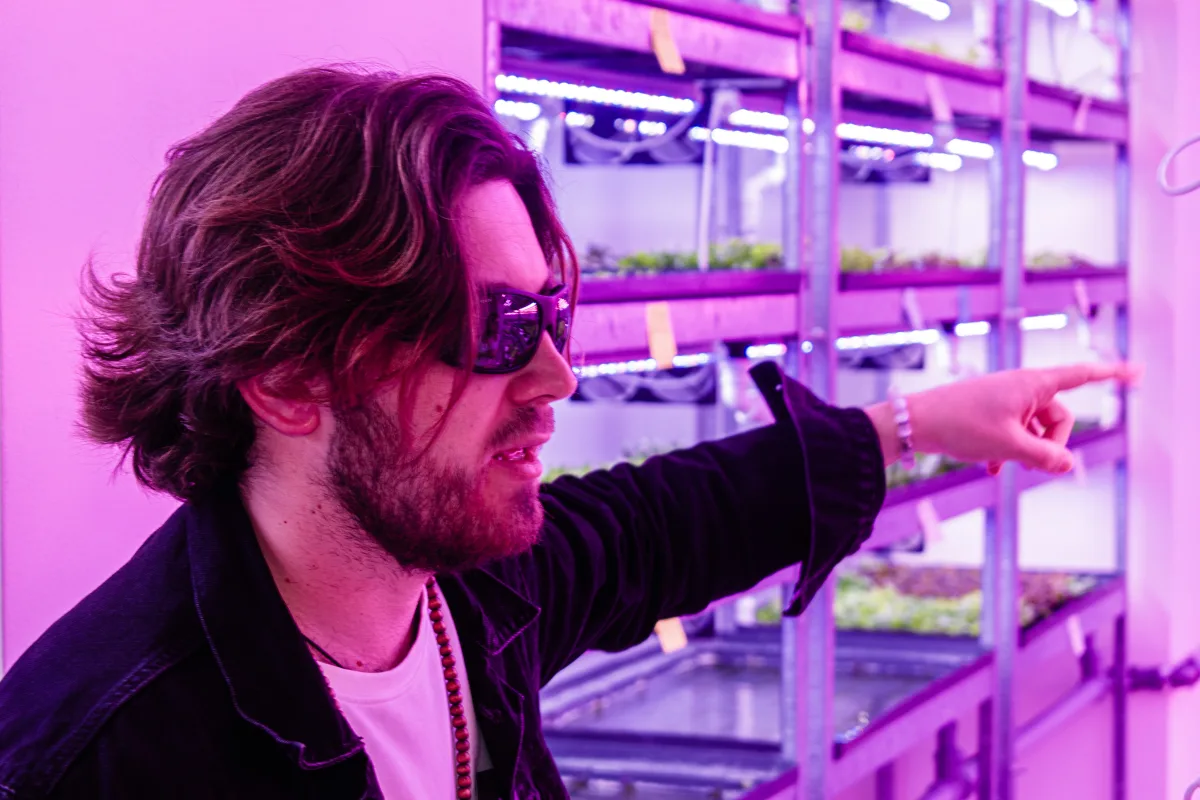
Dmitrii remembers seeing his mother putting market-bought lettuce in a glass of water as a little boy. “I later realized that’s what people want, something that’s alive, not just fresh.”
CityFarm now operates in more than a dozen locations, with each site bringing in around 10,000 euros in monthly profit even with high energy costs. “The biggest cost is electricity,” Dmitrii says. “If we go fully solar, this model becomes almost unstoppable.”
Moldovans don’t need to follow social media trends for greentech ideas. Almost everyone in Moldova is connected to the soil in the most literal sense. Agriculture has long been central to Moldova’s economy, with the sector accounting for 7.6 per cent of GDP in 2023 and 45 per cent of national exports, mostly to the EU. Key export markets include Romania, Italy, and Germany, with significant year-on-year growth in oilseeds, fruits, and wine.
Now, Dmitrii grows lettuce in trays using water systems that move nutrients around without dirt. In a conventional greenhouse, this type of lettuce might take 50 to 60 days to grow. Here, they grow twice as fast. “Because we control everything,” Dmitrii explains.
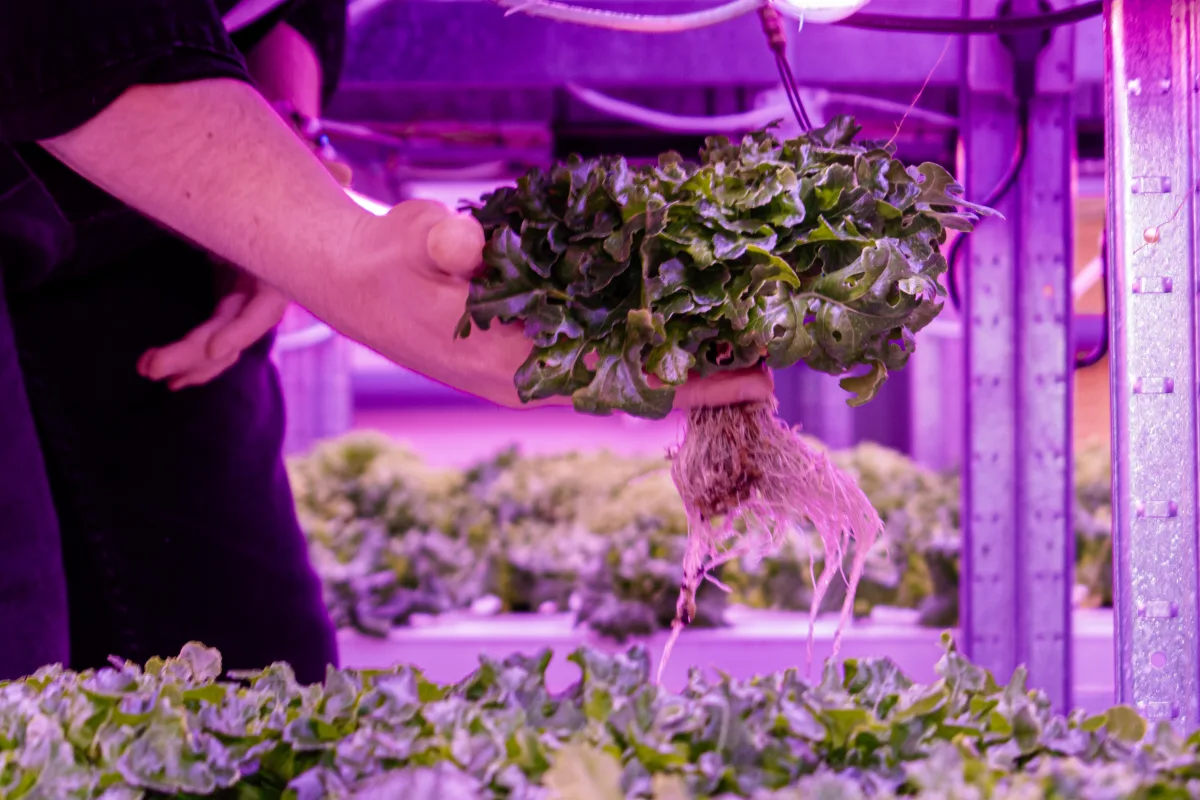
Europeans are returning to their roots. Literally
Across Europe, a similar mindset is taking hold. A recent trend report from Nutrition Hub and EIT Food describes a movement called ‘Terrapy’. It is a return to home-grown, conscious food practices. Whether baking, fermenting, or planting seeds in a tray, people are rediscovering food.
Dmitrii Albot wants to normalise the new way of growing food. And what better place to start than schools? In Gagauzia, an autonomous region of Moldova, his team gave children plants that don’t normally grow in Moldova and asked them to take care of them.
According to Milda Kraużlis, sustainability and agriculture advisor at EIT Food, the European food innovation community, “healthy soil means healthy people”. She sees green technologies not as isolated products, but as interlinked answers to the same question: how to grow better, with less harm.
Growing the future
Dmitrii Albot isn’t alone. Across Moldova, other startups are rethinking farming.
GreenO2 is officially based in Switzerland but rooted in Moldova and founded by a Moldovan, Vitalie Buzu. The company builds digital infrastructure for fields with a system that uses satellite data and AI to monitor soil health, predict carbon output, and guide farmers in how, when, and where to plant. The platform now runs in over 30 countries, covering millions of hectares. In 2024, it raised 1.3 million US dollars to expand.
Solvi, another Moldova-born company, sees the field from above. Their drones scan test plots and crops with near-millimetre precision. Using its PlantAI system, they reduce weeks of manual crop inspection to a few hours by counting leaves, evaluating zones, and mapping potential losses. In the US, it has partnered with the company Intelinair to bring this tech to corn and soybean producers.
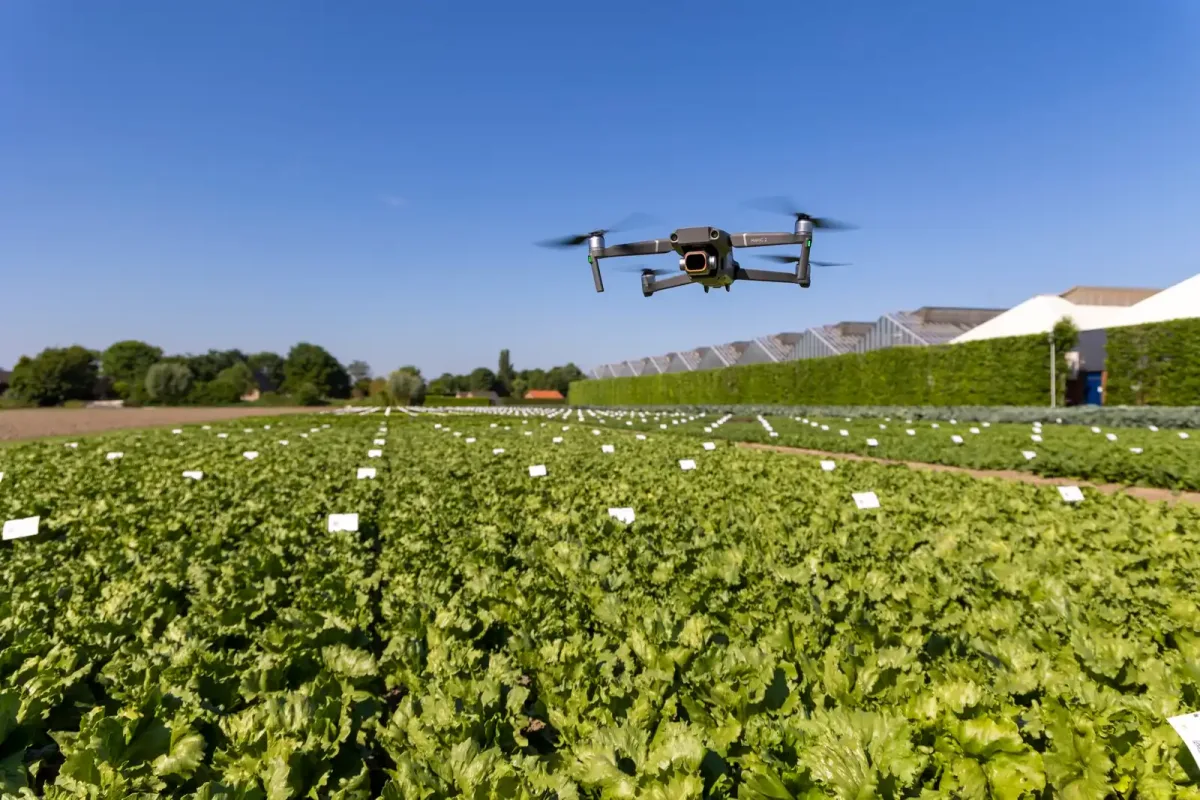
City Farm grows, GreenO2 maps, and Solvi measures. Companies like these are often independent limbs of a living ecosystem. All three are catalysed by Startup Moldova. The foundation led by Olga Melniciuc helps founders access new opportunities and scale internationally.
“The demand for fresh herbs and greens is here,” said Vasile Pojoga from the Federation of Agricultural Producers of Moldova at the HortiTech conference in Chișinău May. “A lot of it is still filled by imports.”
But energy remains a bottleneck. As DERJANT founder Zinaida Plamadeala warned at the same conference, even solar panels cover only 40–45 per cent of her farm’s needs. “You have to plan for that from day one how you’ll power the whole system.”
None of this works without a framework. Milda Kraużlis puts it simply: “Don’t copy. Take the best parts of different systems, and build your own.”
Moldova has done just that. Local start-ups show people have learned to scale and compete.
Dmitrii Albot scrolls through real-time updates on his phone. “This is today.” Each line tracks a shelf, a product, a missing item, or a task. “We’re creating our software, City Farm OS. We started with those telegram bots, so I can see everything that’s happening in each store.” It will assign work, monitor speed, and track every plant, every shelf.
“You put the system in place,” Dmitrii concludes. “Then you let things grow.”
Photo: Iurie Gandrabura.
